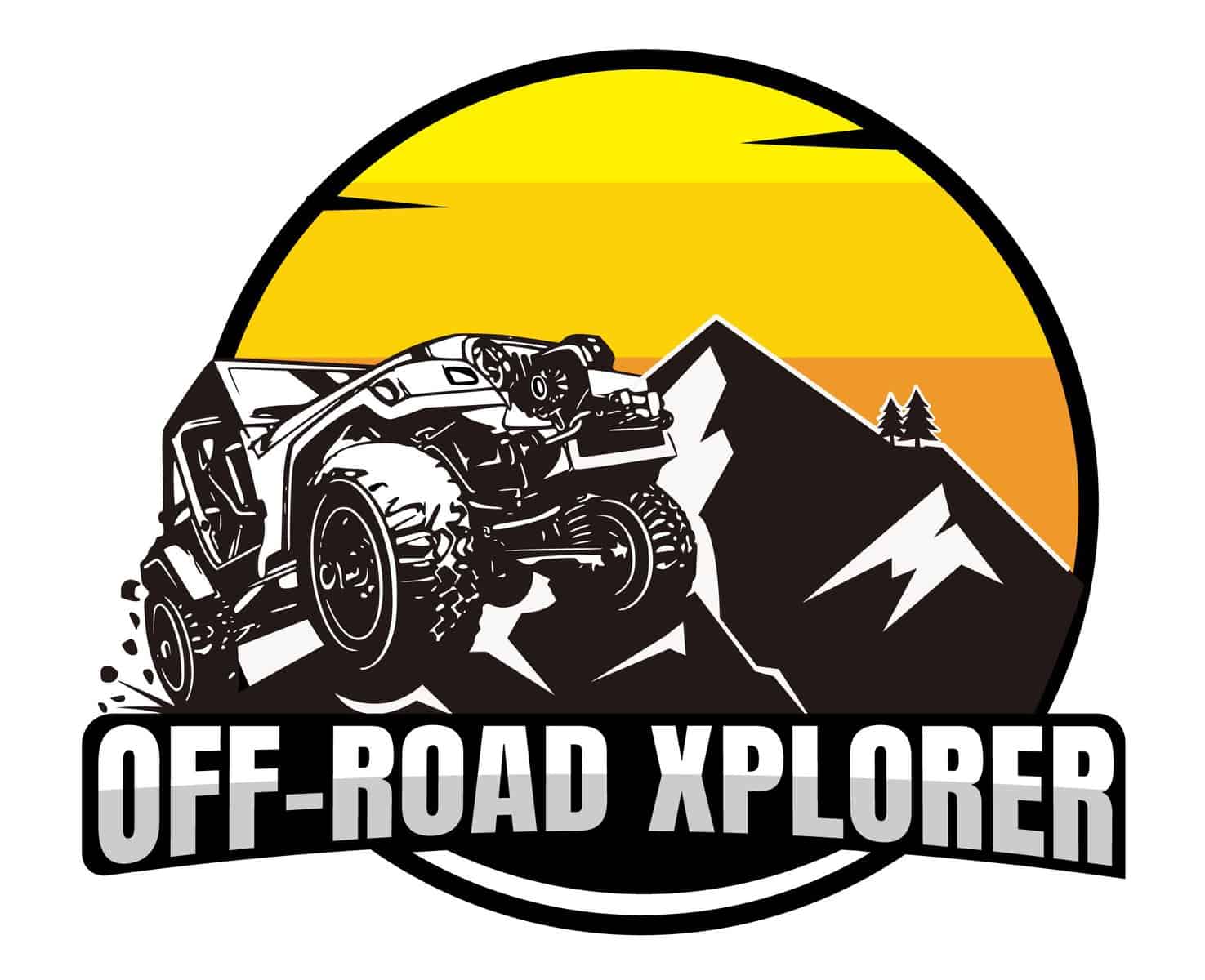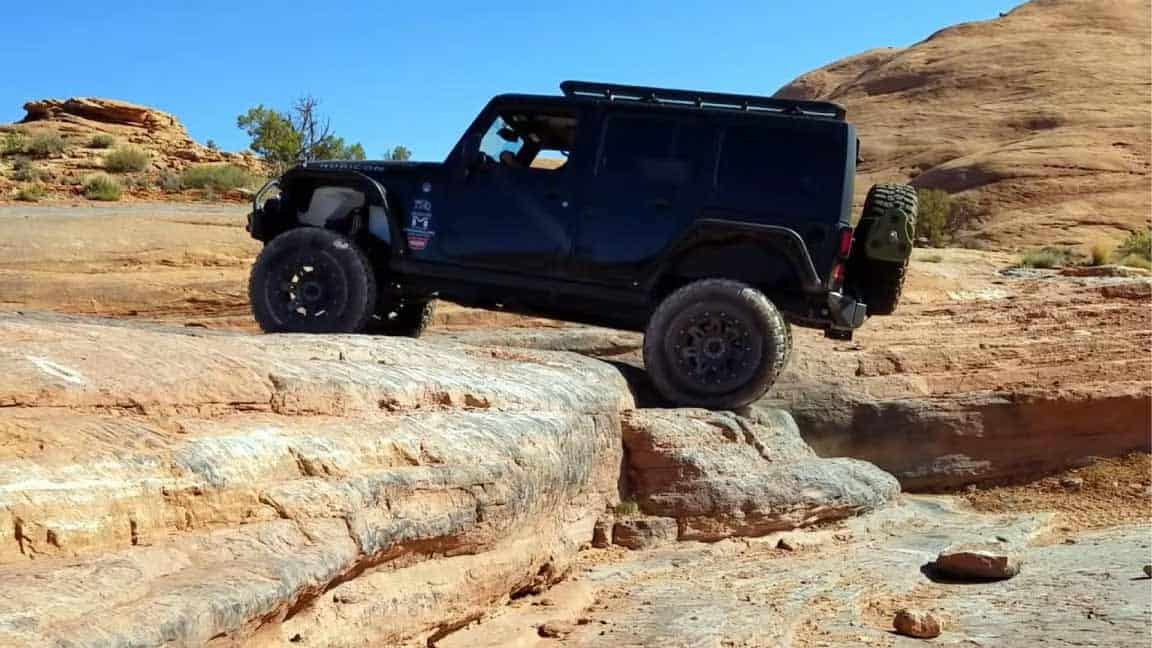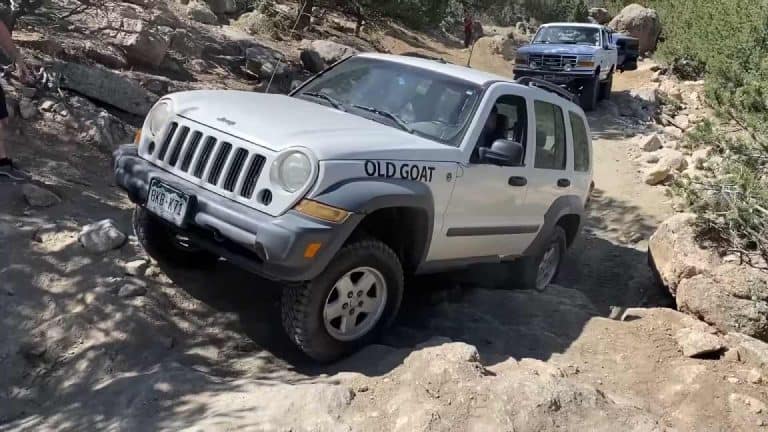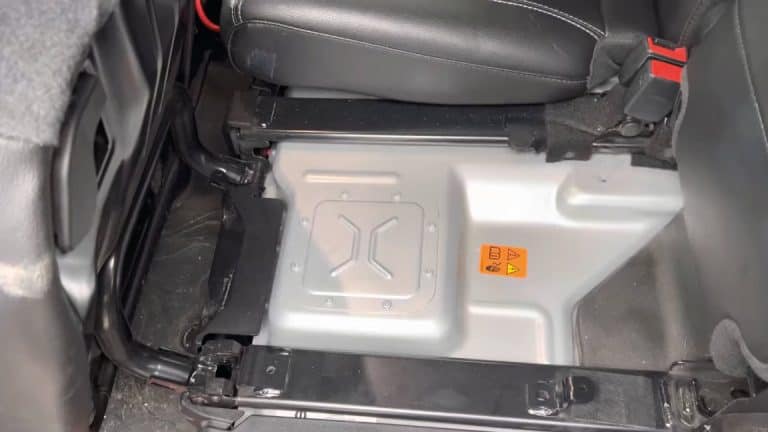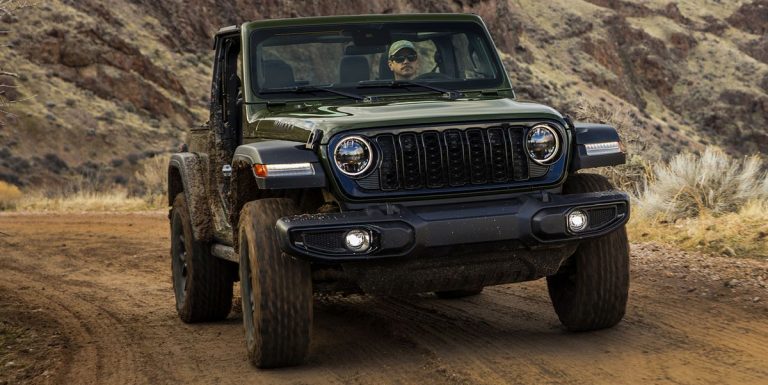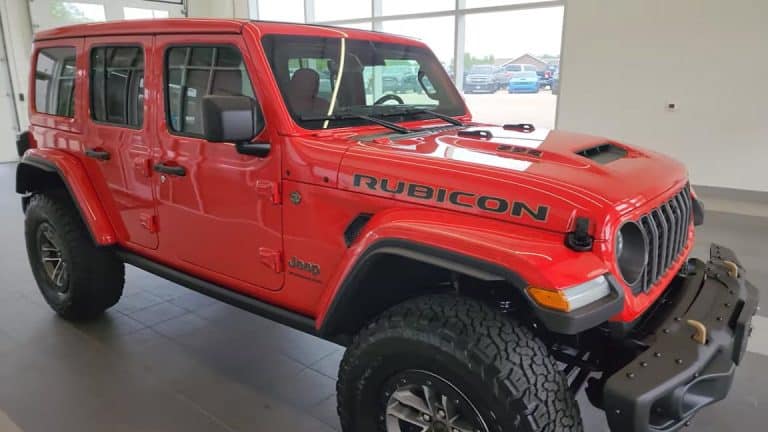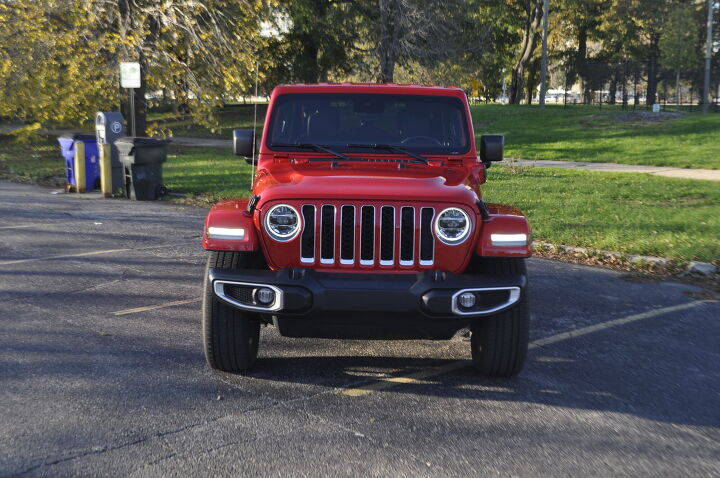2.5 Inch Lift & 33 Inch Tires: Unleash Your Best Jeep’s Off-Road Potential
A jeep wrangler with a 2.5 Inch Lift & 33 Inch Tires improves off-road capability and enhances the vehicle’s appearance. Jeep wranglers are one of the most popular vehicles for off-roading enthusiasts.
However, to truly enjoy the backwoods and rocky terrain, a jeep needs a modification or two. One such modification is adding a lift kit and larger tires. The result is improved off-road performance and better ground clearance. A 2. 5-inch lift kit combined with 33-inch tires is an ideal upgrade option, as it provides enough clearance to handle rough terrain while still maintaining good handling characteristics on paved roads.
Additionally, the combination can enhance the jeep’s appearance and improve its resale value. Before installation, consult with an expert to ensure the size increase and lift works for your particular jeep model.
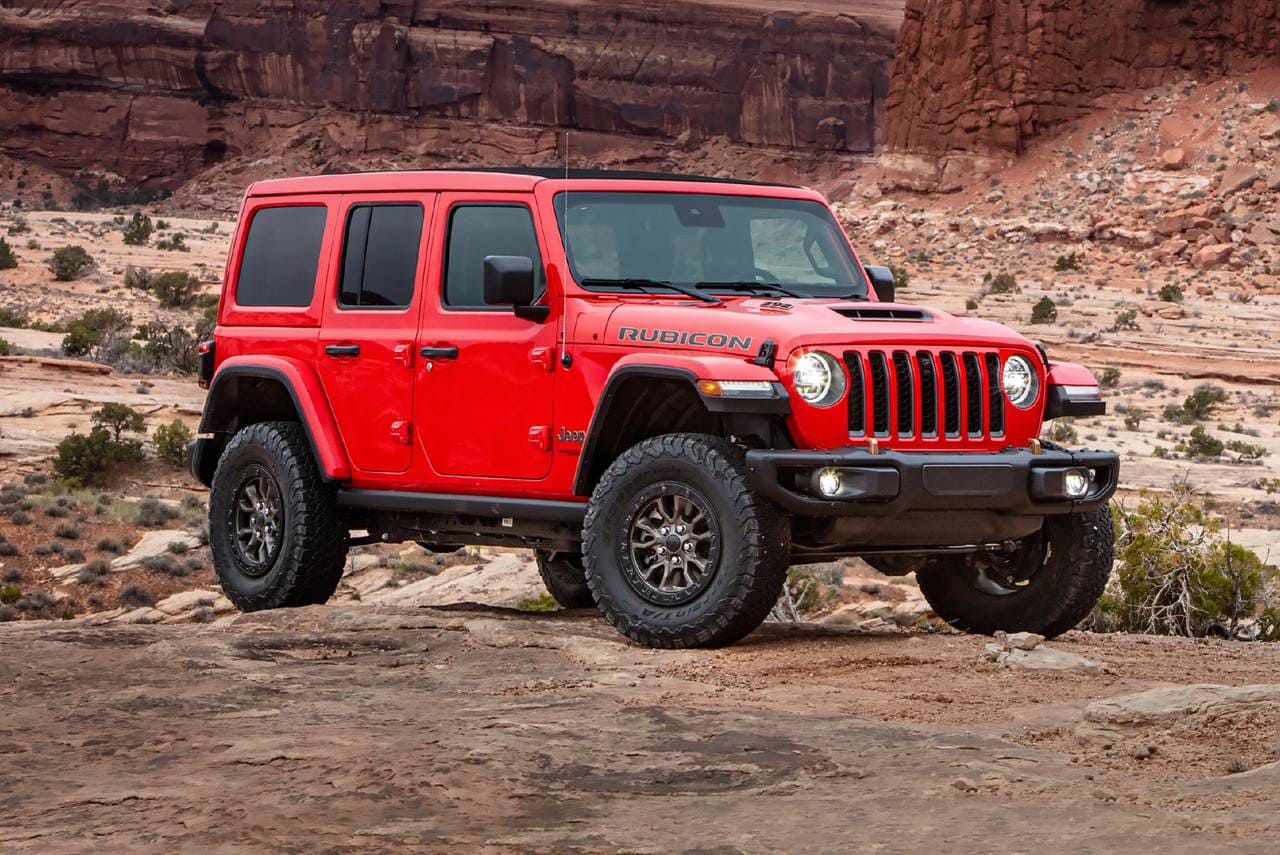
Credit: www.edmunds.com
The Benefits Of A 2.5 Inch Lift And 33 Inch Tires
Jeep Wrangler 2.5 Inch Lift With 33 Inch Tires
Jeep Wrangler enthusiasts are always looking for the best ways to improve their off-road driving experience. One popular modification that has gained popularity over the years is a 2. 5-inch lift and 33-inch tires. This upgrade is a great way to take your Jeep Wrangler to the next level.
In this blog, we’ll explore the benefits of this upgrade in detail.
Improved Ground Clearance
The first and most significant benefit of installing a 2. 5-inch lift and 33-inch tires is improved ground clearance. The additional height allows your vehicle to clear obstacles that were previously too high or too steep. Rocks, logs, and other obstacles that could have damaged your undercarriage can now be navigated with ease.
- Better ground clearance allows you to go on more adventurous off-road expeditions.
- The lift kit provides ample space between the vehicle and the terrain.
- You’ll be able to tackle any obstacle in your path with confidence.
Ability To Take On More Aggressive Terrain
The next advantage of installing a 2.5 Inch Lift & 33 Inch Tires tires is the ability to take on more aggressive terrain. With the larger tires, your jeep wrangler can grip uneven surfaces, making it easier to navigate steep hills and rocky landscapes.
The additional height provided by the lift kit also helps to overcome obstacles, ensuring that you can take your jeep to places you never thought possible.
- With more substantial tires, your vehicle can easily climb over rocks and boulders that would have otherwise been impossible to navigate.
- The lift kit provides optimal clearance, even on rough terrain.
- Steep inclines and uneven surfaces can be navigated with ease.
Better Approach And Departure Angles
Another crucial benefit of the 2.5 Inch Lift & 33 Inch Tires upgrade is better approach and departure angles. The increased height and tire size provide optimal clearance, allowing you to climb steep hills and obstacle-ridden terrain without worrying about hitting obstacles.
The improved approach and departure angles allow you to access previously inaccessible paths and trails.
- Optimal approach and departure angles help you pass through tight and narrow pathways.
- The larger tires and increased height make it easy to overcome obstacles on rough terrain.
- The improved angles provide better weight distribution, leading to a more stable ride.
Improved Overall Visibility
Improved overall visibility is another benefit of the 2.5 Inch Lift & 33 Inch Tires upgrade. With the additional height, you get better visibility of the road ahead, which is ideal for off-road driving. The larger tires also enhance your viewing distance, further contributing to an overall improved driving experience.
- You get a better view of off-road terrain with the increased vehicle height.
- With the larger tires, you can see obstacles and other vehicles from a greater distance, helping you to avoid collisions and accidents.
- Improved visibility leads to better situational awareness, leading to a safer overall driving experience.
Enhanced Style And Appearance
Last but not least, installing a 2.5 Inch Lift & 33 Inch tires improves your Jeep Wrangler’s style and appearance. The additional height and larger tires make your vehicle stand out and give it a rugged, aggressive look. This is a great way to showcase your personality and style while still improving your driving experience.
- The stylish appearance is perfect for off-road enthusiasts who want a rugged and tough-looking vehicle.
- The larger tires and increased height give your vehicle a fearsome appearance that is sure to turn heads.
- The upgrade adds a unique flair to your Jeep Wrangler, setting it apart from others on the road.
The 2.5 Inch Lift & 33 Inch Tires upgrade is a must-have for any Jeep Wrangler enthusiast looking to improve their off-road driving experience. With the benefits of improved ground clearance, the ability to take on more aggressive terrain, better approach and departure angles, improved overall visibility, and enhanced style and appearance, there’s no reason not to make the upgrade.
Give your Jeep Wrangler the upgrade it deserves today!
Choosing The Right Lift Kit For Your Jeep
Jeep wrangler enthusiasts love customizing their rides with modifications like lift kits and bigger tires. One of the most popular modifications is a 2.5 Inch Lift & 33 Inch Tiress. This upgrade provides benefits like better off-road performance and a more aggressive appearance.
In this section, we will discuss the key factors to consider when selecting the right lift kit for your jeep.
Understanding Compatibility
Before buying a lift kit, it is important to ensure compatibility with your jeep model and year. Lift kits are designed for specific jeep models and sizes. It is crucial to purchase a lift kit that is compatible with your vehicle and tire size.
Failing to do so may result in poor performance or even damage to your vehicle.
Types Of Lift Kits
There are three types of lift kits available for jeeps: body lifts, suspension lifts, and coil spring spacers. Each type has its own advantages and disadvantages:
- Body lifts: This involves increasing the height of the vehicle’s body above the frame. Body lifts are easy to install and less expensive than other types of lifts. However, they do not improve off-road performance, and there is only limited clearance between the tires and the body.
- Suspension lifts: Suspension lifts include replacing the vehicle’s stock suspension parts with aftermarket components. This results in a more significant height increase and improved performance. However, suspension lifts are more expensive than body lifts and require professional installation.
- Coil spring spacers: This type involves adding spacers to the coil springs to increase the height of the jeep. Coil spring spacers are a cost-effective way to lift your jeep, but they can cause a rougher ride and reduced handling on-road.
Factors To Consider When Selecting A Lift Kit
Several factors must be considered when selecting the right lift kit for your jeep:
- Intended use: The first consideration when selecting a lift kit is what you plan to use your jeep for. If your jeep is mainly for off-roading, then a suspension lift kit would be ideal. If you only plan to drive on-road, then a body or coil spring spacer lift kit may be more suitable.
- Tire size: Lift kits are designed for specific tire sizes, so you should have a clear idea of what tire size you want to install before purchasing a lift kit. The 2.5 Inch Lift & 33 Inch Tires is a popular setup for jeeps.
- Budget: Lift kits can range from a few hundred to thousands of dollars, depending on the type and brand. Set a budget and stick to it when selecting a lift kit.
- Professional installation: Lift kit installation can be challenging and requires specialized tools. It is recommended that you have a professional mechanic install your lift kit. Installing a lift kit improperly can be dangerous and cause serious damage to your jeep.
By understanding compatibility, the types of lift kits, and the factors to consider when selecting a lift kit, you will be able to make an informed decision about which lift kit is right for your jeep. Remember to always choose a lift kit that is compatible with your vehicle and tire size, and have it installed by a professional for optimal performance and safety.
Selecting The Right Tires For Your Jeep
Jeep wrangler is an excellent vehicle for off-road adventures, and lifting your jeep wrangler with 2. 5 inches and fitting it with 33-inch tires can improve its overall performance. However, selecting the right tires for your jeep is crucial to enjoy your off-road experience to the fullest.
In this blog post, we will discuss different factors you need to consider while selecting the perfect tires for your jeep under the subheading: selecting the right tires for your jeep.
Types Of Tires
When selecting tires for your jeep, you will come across different types of tires, including all-terrain, mud-terrain, and highway-terrain tires. Here are the key features of these tires:
- All-terrain tires: These tires are perfect for weekend trips on different terrains, including mud, sand, gravel, and rocks. They have an aggressive tread pattern that provides traction and stability. They are also suitable for daily driving.
- Mud-terrain tires: Mud-terrain tires are designed to perform well on muddy terrains. They have an even-aggressive tread pattern that helps to provide maximum traction in muddy conditions. However, they are noisy on highways and less efficient on dry surfaces.
- Highway-terrain tires: These tires are ideal for daily driving and long-distance travel on highways. They offer a comfortable and quiet ride, and they are also fuel-efficient. However, they are not suitable for rough terrains.
Tire Size Specifications
Choosing the right tire size is crucial for your jeep’s performance and safety. Here are some essential factors to keep in mind while selecting the tire size:
- Width: The width of the tire has a direct impact on traction and stability. Wider tires offer better traction, but they can reduce fuel economy. Narrow tires provide better fuel economy but offer less traction.
- Aspect ratio: The aspect ratio is the height of the tire sidewall expressed as a percentage of the tread width. A lower aspect ratio means better handling but reduced ride comfort.
- Load index: The load index indicates the maximum weight capacity of the tire. Select the tire with a load index that meets or exceeds your jeep’s weight.
- Speed rating: The speed rating shows the maximum speed capacity of the tire. Select a tire with a speed rating that meets or exceeds your jeep’s speed capacity.
Tire Tread Patterns
Tire tread patterns determine the tire’s performance on different terrains. Here are the three types of tread patterns:
- Symmetric tread: These tires are suitable for daily driving on highways and city roads. They are quiet and provide a comfortable ride.
- Asymmetric tread: Asymmetric tires offer the best of both worlds. They have a quiet ride and provide better handling and traction.
- Directional tread: Directional tires have an arrow-shaped tread pattern that provides better handling and traction on wet surfaces. They are perfect for off-roading in muddy and slippery conditions.
Terrain Considerations
The terrain where you often drive your jeep determines the type of tire you need. If you frequently drive on muddy surfaces, mud-terrain tires are your best bet. If you mostly drive on highways, highway-terrain tires are the perfect fit.
For off-road adventures, all-terrain tires provide the required traction and stability on different terrains.
Budgetary Constraints
The type of tires you choose for your jeep depends on your budget. High-end tires come with a higher price tag and offer better performance and durability. However, if you’re on a budget, there are excellent tire options available that offer good value for money.
Always keep in mind that safety should be your top priority, so choose a tire that meets or exceeds your jeep’s specifications.
Choose the right tires for your jeep to get the most out of your off-road experience. Keep in mind the different tire types, tire size specifications, tread patterns, terrain considerations, and budgetary constraints while making your decision.
Installation: Doing It Yourself Vs. Professional Installation
Jeep enthusiasts know that adding a lift kit and larger tires to their vehicles is a great way to improve their off-road experience. Specifically, adding a 2. 5 inch lift kit with 33-inch tires to the jeep wrangler is a popular modification.
However, the big question is whether you should attempt to install the lift kit and tires yourself or have a professional do it. In this blog post, we will address the advantages and disadvantages of both options, how to prepare for installation, common tools required, and tips for a successful installation.
Advantages And Disadvantages Of Diy Installation
Doing the installation yourself has several advantages and disadvantages to consider:
Advantages:
- Cost savings: Doing it yourself eliminates the cost of labor associated with professional installation.
- Control: You have full control over the installation process.
- Satisfaction: Successfully completing the installation yourself can be very satisfying.
Disadvantages:
- Inexperience: Unless you are experienced in these types of installations, you may make errors that could damage your jeep.
- Equipment: You may not have all of the necessary equipment, which could result in additional costs.
- Warranty: If you damage any part of your jeep during the installation process, you may void your warranty.
Advantages And Disadvantages Of Professional Installation
Professional installation also has advantages and disadvantages to consider:
Advantages:
- Experience: Professionals have experience and knowledge, which means they are less likely to make installation errors.
- Equipment: They have all of the necessary tools and equipment, saving you money on potential purchases.
- Warranty: Many professional installation services offer a warranty on their work, giving you peace of mind.
Disadvantages:
- Cost: Professional installation can be costly due to labor charges, however, it may be more affordable than repairing any installation errors.
Preparing For Installation
Preparation is key to a successful installation. Prior to starting any installation, consider the following:
- Read the installation manual thoroughly. Ensure you understand each step before proceeding.
- Clean the location where the installation will occur.
- Have all necessary equipment and tools readily available. This prevents unnecessary delays and simplifies the installation process.
Common Tools Required
Here are some of the common tools needed to install a lift kit and larger tires on your jeep wrangler:
- Floor jacks and jack stands
- Socket wrench set
- Torque wrench
- Breaker bar
- Allen wrench set
- Hammer
- Drill and drill bits
- Pry bar
- Wire cutters
- Sawzall
Tips For Successful Installation
To prevent potential mistakes during the installation process, here are some tips to follow:
- Work with a friend: Having a second set of hands can make the installation process much easier and faster.
- Double-check each step of the installation process before proceeding.
- Don’t rush the process: Take your time and carefully follow each step in the instruction manual.
- Test the installation: After installation, test your jeep on a safe terrain to ensure everything is working correctly.
Both diy and professional installation have their advantages and disadvantages when installing a 2.5 Inch Lift & 33 Inch Tires on a Jeep Wrangler. Ultimately, the decision comes down to experience, equipment availability, and personal preference. However, by following the tips and recommendations above, you can successfully and safely install the lift kit and larger tires on your Jeep Wrangler to achieve your desired off-road experience.
Tips And Tricks For Maintaining Your Jeep’S Lift Kit And Tires
Jeep Wrangler 2.5 Inch Lift With 33 Inch Tires
Off-roading enthusiasts will appreciate the capability and aggressive look of a jeep wrangler with a 2. 5-inch lift kit paired with 33-inch tires. These modifications give the jeep the extra height and off-road capability to take on tough terrain with ease.
However, like any aftermarket upgrade, there are some maintenance considerations to keep your jeep’s lift kit and tires in top condition for optimal performance. In this post, we will discuss some tips and tricks for maintaining your jeep’s lift kit and tires.
Regular And Preventative Maintenance
Regular maintenance is essential for keeping your jeep’s lift kit and 33-inch tires in good condition. With proper care and maintenance, your jeep will run smoothly and have a consistent performance both on and off the road. Here are some regular and preventative maintenance tips:
- Regularly check bolts, nuts, and joints for looseness and tightness
- Inspect the lift kit components for signs of wear or damage
- Replace or repair any damaged or worn parts immediately
- Keep the lift kit clean and free of debris
- Inspect tires for proper air pressure and tread wear
- Rotate tires regularly to ensure even wear
Safety Checks And Inspections
Regular safety checks and inspections should be conducted to ensure your jeep’s lift kit and tires are operating at peak performance and to prevent any accidents. Here are some safety checks and inspections:
- Inspect the lift kit components and bolts for proper tightness
- Check for any cracks or fractures in the lift kit
- Inspect the suspension, including shocks and struts
- Check for any leaks or damages in the brake lines and hoses
- Inspect the tires for any signs of damage or bulging
Troubleshooting Common Issues
Despite preventative maintenance and safety checks, issues can still occur with your jeep’s lift kit and tires. Here are some common issues and how to troubleshoot them:
- Lift kit sagging: Check the spring rates, shocks, and other components for damage or wear and replace as necessary.
- Tire rubbing: Adjust the steering stops to prevent the tires from rubbing on the fender flares or other body parts.
- Uneven tire wear: Check the tire pressure and alignment to ensure proper wear and rotate the tires regularly.
Extending The Life Of Your Lift Kit And Tires
It is essential to extend the life of your jeep’s lift kit and 33-inch tires to ensure consistent performance and prevent any premature wear or replacements. Here are some tips for extending the life of your jeep’s lift kit and tires:
- Drive your jeep off-road carefully to prevent any damage to the lift kit or tires
- Avoid overloading your jeep or driving on rough terrain
- Keep the lift kit and tires clean and free of debris
- Regularly inspect the components for damage or wear
Costs Associated With Maintenance
Lift kits and 33-inch tires are a significant investment, and maintaining them can add up over time. Essential maintenance can help prevent significant issues and costly repairs down the road. Here are some costs associated with jeep lift kit and tires maintenance:
- Replacement of worn or damaged components or replacing tires
- Labor costs for maintenance and repairs
- Cleaning supplies and tools
Maintaining your jeep’s lift kit and 33-inch tires is crucial to ensure optimal performance both on and off the road. Regular maintenance, safety checks, and troubleshooting common issues can extend the lifespan of your lift kit and tires, saving you money in the long run.
Frequently Asked Questions For Jeep Wrangler 2.5 Inch Lift & 33 Inch Tires
What Is A 2.5 Inch Lift Kit For A Jeep Wrangler?
A 2. 5 inch lift kit raises the height of the jeep wrangler to accommodate larger tires and improve off-road performance.
What Are The Benefits Of A 2.5 Inch Lift For A Jeep Wrangler?
A 2. 5 inch lift allows for larger tires, increased ground clearance, improved off-road performance, and a more aggressive appearance.
What Is The Largest Tire Size I Can Use With A 2.5 Inch Lift On A Jeep Wrangler?
The largest tire size that can be used with a 2. 5 inch lift on a jeep wrangler is generally 33 inches.
What Are The Disadvantages Of A 2.5 Inch Lift For A Jeep Wrangler?
The disadvantages of a 2. 5 inch lift for a jeep wrangler include decreased handling and stability on-road and the potential for increased wear and tear on suspension components.
Can I Install A 2.5 Inch Lift Kit On My Jeep Wrangler Myself?
Installation of a 2. 5 inch lift kit on a jeep wrangler should be done by a professional mechanic or someone with experience in suspension modifications.
Conclusion
After all is said and done, a jeep wrangler 2.5 Inch Lift & 33 Inch Tires is the perfect combination for adventurous drivers. Not only does it give your vehicle a bold, fierce look, but it can also improve your off-road capabilities.
With the added clearance, you can conquer obstacles and terrains that once seemed impossible. Moreover, this upgrade can enhance your jeep’s overall performance and ride quality. However, it is important to note that lifting your vehicle does come with some downsides such as reduced fuel efficiency and increased wear and tear on parts.
As with any modification, it is important to research and consult with professionals to ensure it is done properly and is safe for you and your passengers. Overall, a jeep wrangler lift and tire upgrade is worth considering for those who are looking to take their off-road experience to the next level.
